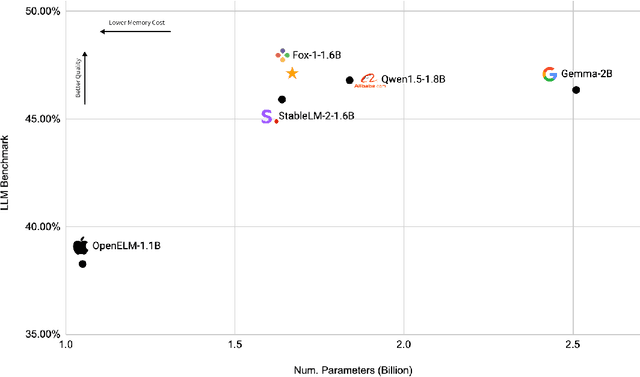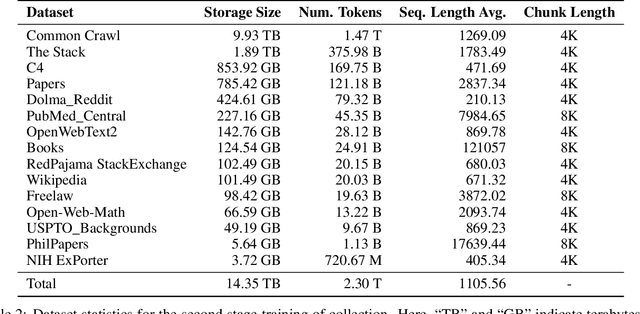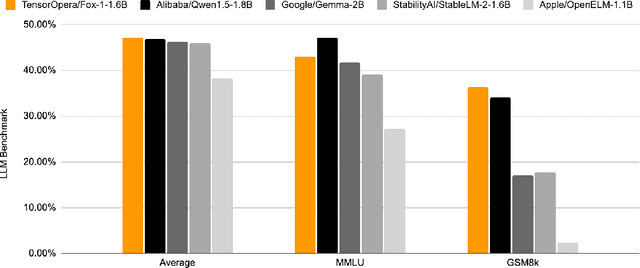Salman Avestimehr
Toward Super Agent System with Hybrid AI Routers
Apr 11, 2025Abstract:AI Agents powered by Large Language Models are transforming the world through enormous applications. A super agent has the potential to fulfill diverse user needs, such as summarization, coding, and research, by accurately understanding user intent and leveraging the appropriate tools to solve tasks. However, to make such an agent viable for real-world deployment and accessible at scale, significant optimizations are required to ensure high efficiency and low cost. This paper presents a design of the Super Agent System. Upon receiving a user prompt, the system first detects the intent of the user, then routes the request to specialized task agents with the necessary tools or automatically generates agentic workflows. In practice, most applications directly serve as AI assistants on edge devices such as phones and robots. As different language models vary in capability and cloud-based models often entail high computational costs, latency, and privacy concerns, we then explore the hybrid mode where the router dynamically selects between local and cloud models based on task complexity. Finally, we introduce the blueprint of an on-device super agent enhanced with cloud. With advances in multi-modality models and edge hardware, we envision that most computations can be handled locally, with cloud collaboration only as needed. Such architecture paves the way for super agents to be seamlessly integrated into everyday life in the near future.
Enabling Weak Client Participation via On-device Knowledge Distillation in Heterogenous Federated Learning
Mar 14, 2025Abstract:Online Knowledge Distillation (KD) is recently highlighted to train large models in Federated Learning (FL) environments. Many existing studies adopt the logit ensemble method to perform KD on the server side. However, they often assume that unlabeled data collected at the edge is centralized on the server. Moreover, the logit ensemble method personalizes local models, which can degrade the quality of soft targets, especially when data is highly non-IID. To address these critical limitations,we propose a novel on-device KD-based heterogeneous FL method. Our approach leverages a small auxiliary model to learn from labeled local data. Subsequently, a subset of clients with strong system resources transfers knowledge to a large model through on-device KD using their unlabeled data. Our extensive experiments demonstrate that our on-device KD-based heterogeneous FL method effectively utilizes the system resources of all edge devices as well as the unlabeled data, resulting in higher accuracy compared to SOTA KD-based FL methods.
Bridging the Safety Gap: A Guardrail Pipeline for Trustworthy LLM Inferences
Feb 12, 2025Abstract:We present Wildflare GuardRail, a guardrail pipeline designed to enhance the safety and reliability of Large Language Model (LLM) inferences by systematically addressing risks across the entire processing workflow. Wildflare GuardRail integrates several core functional modules, including Safety Detector that identifies unsafe inputs and detects hallucinations in model outputs while generating root-cause explanations, Grounding that contextualizes user queries with information retrieved from vector databases, Customizer that adjusts outputs in real time using lightweight, rule-based wrappers, and Repairer that corrects erroneous LLM outputs using hallucination explanations provided by Safety Detector. Results show that our unsafe content detection model in Safety Detector achieves comparable performance with OpenAI API, though trained on a small dataset constructed with several public datasets. Meanwhile, the lightweight wrappers can address malicious URLs in model outputs in 1.06s per query with 100% accuracy without costly model calls. Moreover, the hallucination fixing model demonstrates effectiveness in reducing hallucinations with an accuracy of 80.7%.
Supervised Learning for Analog and RF Circuit Design: Benchmarks and Comparative Insights
Jan 21, 2025Abstract:Automating analog and radio-frequency (RF) circuit design using machine learning (ML) significantly reduces the time and effort required for parameter optimization. This study explores supervised ML-based approaches for designing circuit parameters from performance specifications across various circuit types, including homogeneous and heterogeneous designs. By evaluating diverse ML models, from neural networks like transformers to traditional methods like random forests, we identify the best-performing models for each circuit. Our results show that simpler circuits, such as low-noise amplifiers, achieve exceptional accuracy with mean relative errors as low as 0.3% due to their linear parameter-performance relationships. In contrast, complex circuits, like power amplifiers and voltage-controlled oscillators, present challenges due to their non-linear interactions and larger design spaces. For heterogeneous circuits, our approach achieves an 88% reduction in errors with increased training data, with the receiver achieving a mean relative error as low as 0.23%, showcasing the scalability and accuracy of the proposed methodology. Additionally, we provide insights into model strengths, with transformers excelling in capturing non-linear mappings and k-nearest neighbors performing robustly in moderately linear parameter spaces, especially in heterogeneous circuits with larger datasets. This work establishes a foundation for extending ML-driven design automation, enabling more efficient and scalable circuit design workflows.
CryptoMamba: Leveraging State Space Models for Accurate Bitcoin Price Prediction
Jan 02, 2025



Abstract:Predicting Bitcoin price remains a challenging problem due to the high volatility and complex non-linear dynamics of cryptocurrency markets. Traditional time-series models, such as ARIMA and GARCH, and recurrent neural networks, like LSTMs, have been widely applied to this task but struggle to capture the regime shifts and long-range dependencies inherent in the data. In this work, we propose CryptoMamba, a novel Mamba-based State Space Model (SSM) architecture designed to effectively capture long-range dependencies in financial time-series data. Our experiments show that CryptoMamba not only provides more accurate predictions but also offers enhanced generalizability across different market conditions, surpassing the limitations of previous models. Coupled with trading algorithms for real-world scenarios, CryptoMamba demonstrates its practical utility by translating accurate forecasts into financial outcomes. Our findings signal a huge advantage for SSMs in stock and cryptocurrency price forecasting tasks.
Fox-1 Technical Report
Nov 08, 2024



Abstract:We present Fox-1, a series of small language models (SLMs) consisting of Fox-1-1.6B and Fox-1-1.6B-Instruct-v0.1. These models are pre-trained on 3 trillion tokens of web-scraped document data and fine-tuned with 5 billion tokens of instruction-following and multi-turn conversation data. Aiming to improve the pre-training efficiency, Fox-1-1.6B model introduces a novel 3-stage data curriculum across all the training data with 2K-8K sequence length. In architecture design, Fox-1 features a deeper layer structure, an expanded vocabulary, and utilizes Grouped Query Attention (GQA), offering a performant and efficient architecture compared to other SLMs. Fox-1 achieves better or on-par performance in various benchmarks compared to StableLM-2-1.6B, Gemma-2B, Qwen1.5-1.8B, and OpenELM1.1B, with competitive inference speed and throughput. The model weights have been released under the Apache 2.0 license, where we aim to promote the democratization of LLMs and make them fully accessible to the whole open-source community.
Alopex: A Computational Framework for Enabling On-Device Function Calls with LLMs
Nov 07, 2024



Abstract:The rapid advancement of Large Language Models (LLMs) has led to their increased integration into mobile devices for personalized assistance, which enables LLMs to call external API functions to enhance their performance. However, challenges such as data scarcity, ineffective question formatting, and catastrophic forgetting hinder the development of on-device LLM agents. To tackle these issues, we propose Alopex, a framework that enables precise on-device function calls using the Fox LLM. Alopex introduces a logic-based method for generating high-quality training data and a novel ``description-question-output'' format for fine-tuning, reducing risks of function information leakage. Additionally, a data mixing strategy is used to mitigate catastrophic forgetting, combining function call data with textbook datasets to enhance performance in various tasks. Experimental results show that Alopex improves function call accuracy and significantly reduces catastrophic forgetting, providing a robust solution for integrating function call capabilities into LLMs without manual intervention.
ModalityMirror: Improving Audio Classification in Modality Heterogeneity Federated Learning with Multimodal Distillation
Aug 28, 2024Abstract:Multimodal Federated Learning frequently encounters challenges of client modality heterogeneity, leading to undesired performances for secondary modality in multimodal learning. It is particularly prevalent in audiovisual learning, with audio is often assumed to be the weaker modality in recognition tasks. To address this challenge, we introduce ModalityMirror to improve audio model performance by leveraging knowledge distillation from an audiovisual federated learning model. ModalityMirror involves two phases: a modality-wise FL stage to aggregate uni-modal encoders; and a federated knowledge distillation stage on multi-modality clients to train an unimodal student model. Our results demonstrate that ModalityMirror significantly improves the audio classification compared to the state-of-the-art FL methods such as Harmony, particularly in audiovisual FL facing video missing. Our approach unlocks the potential for exploiting the diverse modality spectrum inherent in multi-modal FL.
PolyRouter: A Multi-LLM Querying System
Aug 26, 2024



Abstract:With the rapid growth of Large Language Models (LLMs) across various domains, numerous new LLMs have emerged, each possessing domain-specific expertise. This proliferation has highlighted the need for quick, high-quality, and cost-effective LLM query response methods. Yet, no single LLM exists to efficiently balance this trilemma. Some models are powerful but extremely costly, while others are fast and inexpensive but qualitatively inferior. To address this challenge, we present PolyRouter, a non-monolithic LLM querying system that seamlessly integrates various LLM experts into a single query interface and dynamically routes incoming queries to the most high-performant expert based on query's requirements. Through extensive experiments, we demonstrate that when compared to standalone expert models, PolyRouter improves query efficiency by up to 40%, and leads to significant cost reductions of up to 30%, while maintaining or enhancing model performance by up to 10%.
ScaleLLM: A Resource-Frugal LLM Serving Framework by Optimizing End-to-End Efficiency
Jul 23, 2024Abstract:Large language models (LLMs) have surged in popularity and are extensively used in commercial applications, where the efficiency of model serving is crucial for the user experience. Most current research focuses on optimizing individual sub-procedures, e.g. local inference and communication, however, there is no comprehensive framework that provides a holistic system view for optimizing LLM serving in an end-to-end manner. In this work, we conduct a detailed analysis to identify major bottlenecks that impact end-to-end latency in LLM serving systems. Our analysis reveals that a comprehensive LLM serving endpoint must address a series of efficiency bottlenecks that extend beyond LLM inference. We then propose ScaleLLM, an optimized system for resource-efficient LLM serving. Our extensive experiments reveal that with 64 concurrent requests, ScaleLLM achieves a 4.3x speed up over vLLM and outperforms state-of-the-arts with 1.5x higher throughput.
 Add to Chrome
Add to Chrome Add to Firefox
Add to Firefox Add to Edge
Add to Edge